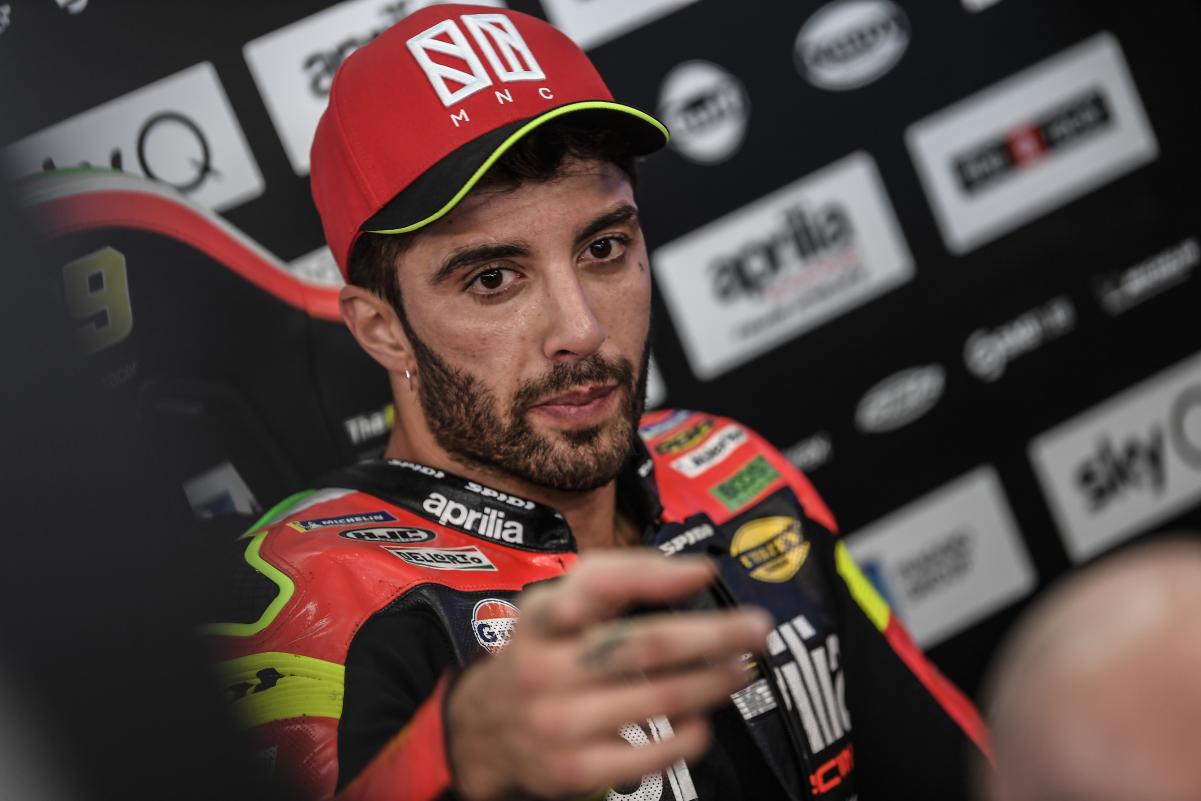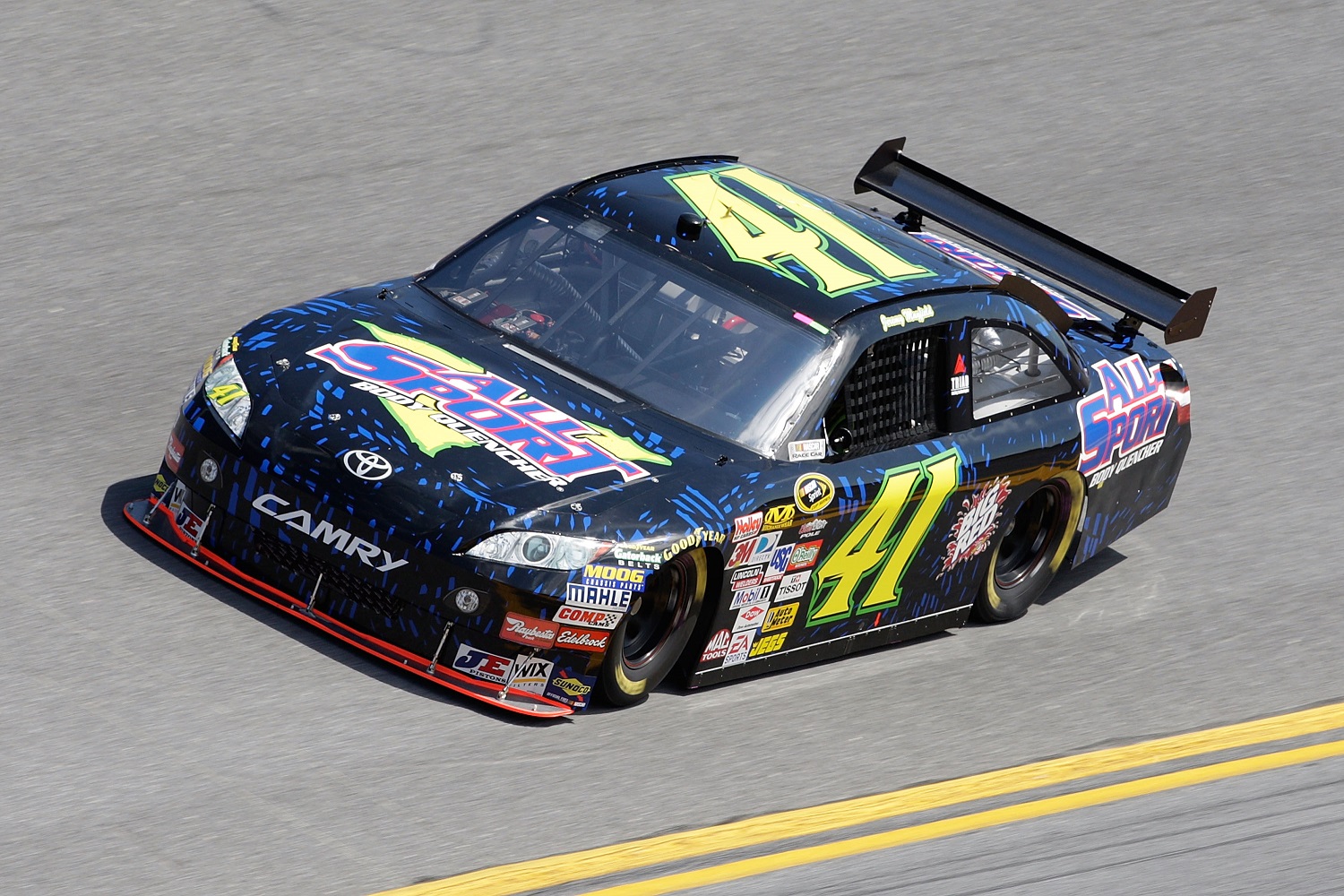
The Case of Doping in Motorsport
Andrea Iannone’s recent provisional suspension for testing positive on the anabolic steroid drostanolone in December shed a new light on the case of doping in motorsport.
When thinking of doping, sports such as cycling or athletics usually come to mind first. Motorsport meanwhile tends to not rank very highly on the list of disciplines associated with substance abuse – and for good reason. Racing does not seem like a likely environment for performance-enhancing drugs and doping scandals are a relative rarity in the paddock.
But motorsport is not innocent when it comes to substance abuse. Despite not offering a real platform for doping, there are documented cases of drug use and anti-doping policies have been put in place to keep the sport clean.
Why there is little room for drugs in motorsport
In a sport where a lot comes down to machinery rather than physicality, the impact performance-enhancing drugs can have is significantly smaller than in other disciplines. It therefore seems logical that the vast majority of cheating scandals in the paddock circulate around technology and the machine rather than the operator.
The benefit of heavy drugs is simply too minor in regard to the risk coming with it to be a popular option, but there are more reasons for the rarity of substance abuse, or the finding of it anyway, in motorsport.
When athletes decide to take performance enhancing drugs, they usually put exactly one person in danger – themselves. That is not the case in motor racing and drivers or riders are well aware of the potential consequences of drug-use gone wrong on track.
Using a substance that influences strength and concentration in motorsport poses a fatal risk, not only to the respective racers themselves but also to other competitors, spectators, and marshals.
Drivers and riders have to consider people beyond themselves and adding drugs to a sport that already comes with enough inherent risks would be nothing short of reckless.
Furthermore, racers know of the fragility of their position. With fewer sponsors, a limited number of seats available, and more short-term contracts, a career in professional racing is marked by uncertainty. In this environment, even a simple mistake could prove costly and end a career.
Doping and anti-doping
However, the limited benefit of drug abuse and the risk outweighing the reward are not the end of the story, doping in motorsport is far more complex than that. Success is measured by the thousandth of a second in racing and even the tiniest factors could make a difference.
Motorsport requires physical strength and physical as well as mental endurance, focus and concentration, and quick reaction times from its competitors – and all of these areas can be enhanced with the right drug.
There are substances, legal and illegal, that can be used to gain an advantage on track, as minor as it may be. Steroids can help to build muscle strength, ambien or adderall can improve focus and concentration and amphetamines can kill appetite and thereby aid or maintain a slim physique.
The use of tacrine, a medication developed for the treatment of Alzheimer’s, has been reported in the Formula One paddock to boost memory and focus. However, tacrine is not currently on the prohibited list and therefore does not account for a doping offence.

Similarly, Cal Crutchlow hinted at the use of minor substances like diuretics to shed weight in MotoGP.
Athletes in series like Formula One or MotoGP are subject to random in- and out-of-competition drug tests to WADA standards and are liable to the WADA code in order to prohibit substance abuse in racing.
Moreover, the FIM and FIA are keen to give racers a good education about anti-doping on and off the track from early levels onwards.
However, despite the efforts made to keep the sport clean, prominent names like Mark Webber, Jenson Button or Cal Crutchlow have called for more and stricter anti-doping checks.
Doping in auto racing
There are well-documented stories of drivers who competed on morphine, amphetamines and many others besides in the past – drugs were the norm back in the day. Sir Stirling Moss himself admitted to have used drugs in rallies and suggested that the substance given to him by Juan Manuel Fangio for the 1955 Mille Miglia would probably make the prohibited list nowadays.
More contemporary examples include the controversial case of NASCAR driver Jeremy Mayfield.
In 2009, Mayfield was suspended indefinitely for having tested positive on a prohibited substance that was later claimed to be methamphetamine. The driver denied the allegations and, as evidence was on his side and the chance of a false positive was high, his ban was lifted.
Only days later though, NASCAR stated that Mayfield had again tested positive for methamphetamine. Mayfield continued to deny the charges and additionally took another drug test, administered by a certified drug-testing laboratory not affiliated with NASCAR, minutes after the series’ test – the results came back as negative.

The resulting legal case was eventually thrown out since the District Court Judge in charge deemed that Mayfield had lost his right to sue NASCAR for defamation, when he agreed to take part in NASCAR events. The driver remained imperturbable about his innocence but has not been reinstated since.
Other examples are NASCAR drivers Aaron Fike, who was banned from competition from 2007 to 2012 due to heroin abuse on and off race days, and A.J. Allmendinger, who was suspended in 2012 after his B sample tested positive for the amphetamine adderall which he claimed to have taken unknowingly, being told it was an energy pill.
Both drivers were reinstated after completing NASCAR’s Road to Recovery program.
Former Formula One driver Franck Montagny was replaced in the Andretti Autosport Formula E team after just two races of the 2014-15 season for reasons not immediately announced to the public. Montagny would later admit he tested positive for the cocaine derivative benzoylecgonine and was given a two-year ban from racing in 2015. At 40-years-old, he took this opportunity to retire.
Doping in motorcycle racing
The most prominent doping case in motorcycle racing is that of Noriyuki Haga who lost the chance to challenge for the 2000 World Championship after testing positive for the banned substance ephedrine.
Though the intake of the drug was not intentional, ephedrine occurred naturally in a herbal supplement Haga had been taking, the Japanese rider was initially handed a one month ban and had his points from the South African races deducted.
After appeal, the ban was reduced to two weeks and the points from Race 1 were reinstated, but this was still enough to take Haga out of the title fight.
Another famous example is Anthony Gobert whose career was shattered due to marijuana abuse. While this was not necessarily of a performance-enhancing but recreational nature, his drug addiction saw him cast out of most series he raced in.
More recently, Australian Moto2 rider Anthony West tested positive for methylhexaneamine and was banned in 2012. What followed was a several year dispute between West and the FIM and a second failed drug-test that eventually led to the Australian rider quitting his career.
In 2018, Trials GP rider Jeroni Fajardo was banned for one year for taking the stimulant heptaminol while AMA Supercross riders Broc Tickle and Christian Craig received two-year suspensions for testing positive on the banned substances methylhexanamine and heptaminol respectively.
What motorsport is more prominent with than athletics or cycling though, is the use of recreational drugs. For both Montagny and Gobert, the use of their drugs were unlikely to benefit them on the track yet still enjoyed the thrills that came with their fast-paced life. Looking back, do we see James Hunt or drivers who smoked tabacco in the same light or is this behaviour given a pass for their lack of modern context and lesser focus on driver fitness.
The racing world is not immune to this behaviour, even if it does make the headlines as other sports do. Yet it is still up to the governing bodies to act accordingly.



![Private: [ID: 71rYi-xncgM] Youtube Automatic](https://motorradio-xijqc.projectbeta.co.uk/wp-content/uploads/2024/08/private-id-71ryi-xncgm-youtube-a-1-360x203.jpg)
![Private: [ID: 1SfHxvC8Doo] Youtube Automatic](https://motorradio-xijqc.projectbeta.co.uk/wp-content/uploads/2024/07/private-id-1sfhxvc8doo-youtube-a-1.jpg)
![Private: [ID: H6XRkf6kROQ] Youtube Automatic](https://motorradio-xijqc.projectbeta.co.uk/wp-content/uploads/2024/07/private-id-h6xrkf6kroq-youtube-a-1-360x203.jpg)
![Private: [ID: Kb6w-qAmKls] Youtube Automatic](https://motorradio-xijqc.projectbeta.co.uk/wp-content/uploads/2023/12/private-id-kb6w-qamkls-youtube-a-360x203.jpg)
![Private: [ID: CcpwYw20k3k] Youtube Automatic](https://motorradio-xijqc.projectbeta.co.uk/wp-content/uploads/2024/07/private-id-ccpwyw20k3k-youtube-a-360x203.jpg)

![[ID: x1SiRC5jhW4] Youtube Automatic](https://motorradio-xijqc.projectbeta.co.uk/wp-content/uploads/2022/04/id-x1sirc5jhw4-youtube-automatic-360x203.jpg)
![[ID: lMZ8lAeLubk] Youtube Automatic](https://motorradio-xijqc.projectbeta.co.uk/wp-content/uploads/2022/04/id-lmz8laelubk-youtube-automatic-360x203.jpg)
![[ID: GAYCcnqyFo4] Youtube Automatic](https://motorradio-xijqc.projectbeta.co.uk/wp-content/uploads/2022/04/id-gayccnqyfo4-youtube-automatic-360x203.jpg)
![[ID: Gg142H296QY] Youtube Automatic](https://motorradio-xijqc.projectbeta.co.uk/wp-content/uploads/2022/04/id-gg142h296qy-youtube-automatic-360x203.jpg)
![Private: [ID: 71rYi-xncgM] Youtube Automatic](https://motorradio-xijqc.projectbeta.co.uk/wp-content/uploads/2024/08/private-id-71ryi-xncgm-youtube-a-1-236x133.jpg)
![Private: [ID: H6XRkf6kROQ] Youtube Automatic](https://motorradio-xijqc.projectbeta.co.uk/wp-content/uploads/2024/07/private-id-h6xrkf6kroq-youtube-a-1-236x133.jpg)
![Private: [ID: Kb6w-qAmKls] Youtube Automatic](https://motorradio-xijqc.projectbeta.co.uk/wp-content/uploads/2023/12/private-id-kb6w-qamkls-youtube-a-236x133.jpg)
![Private: [ID: nc-8g6ROCe8] Youtube Automatic](https://motorradio-xijqc.projectbeta.co.uk/wp-content/uploads/2023/11/private-id-nc-8g6roce8-youtube-a-236x133.jpg)
![Private: [ID: wWrhfjOQuIc] Youtube Automatic](https://motorradio-xijqc.projectbeta.co.uk/wp-content/uploads/2023/11/private-id-wwrhfjoquic-youtube-a-236x133.jpg)